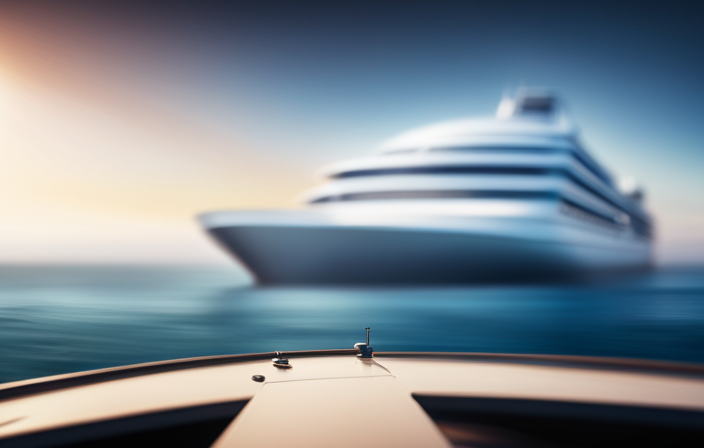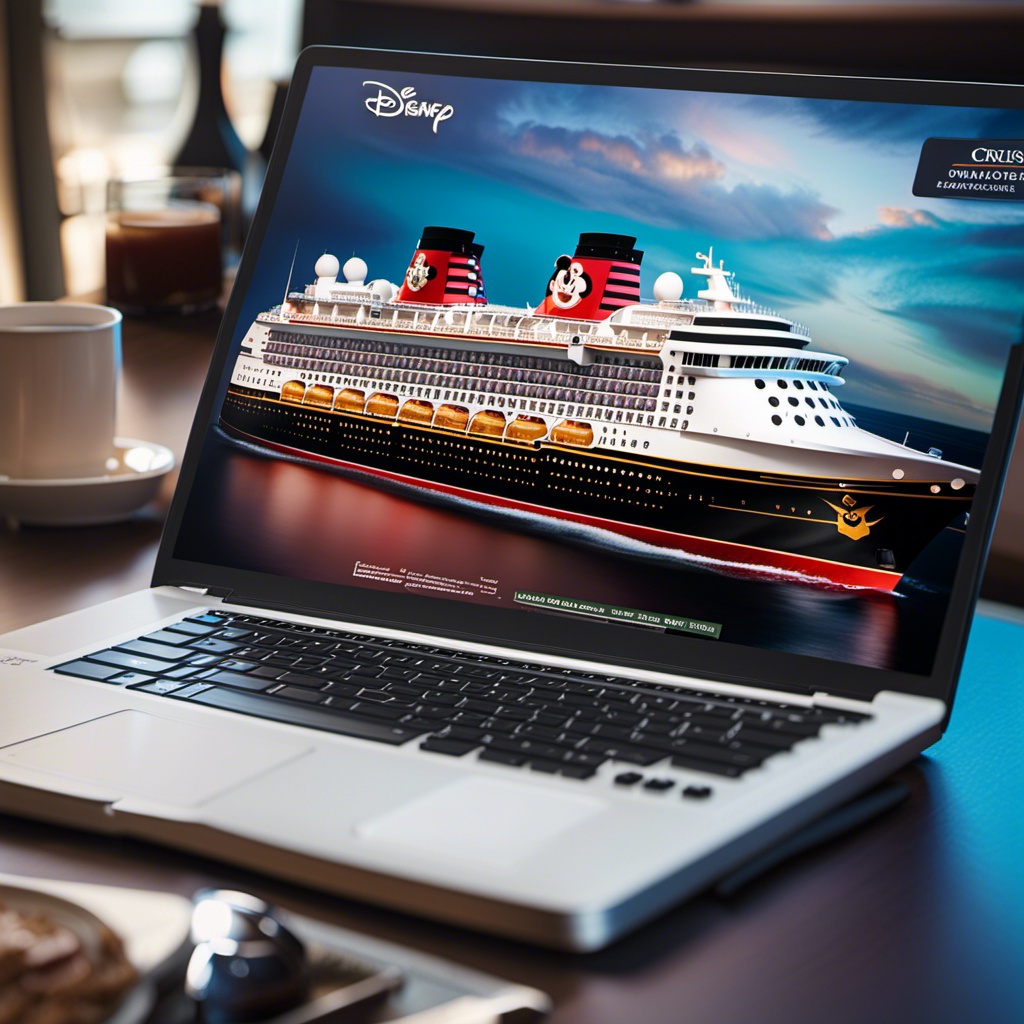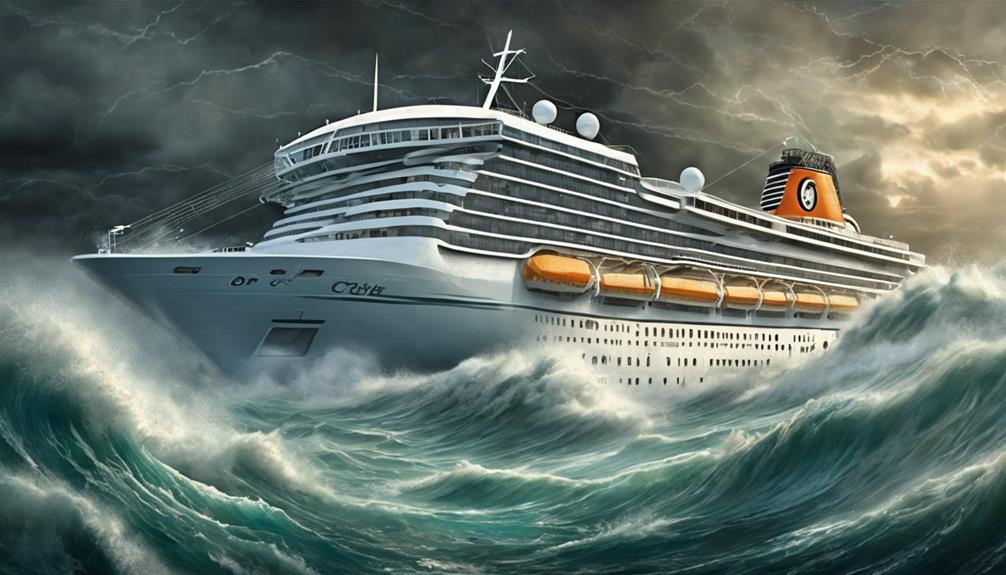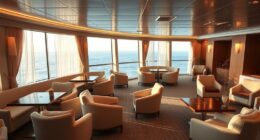Oh, the fascinating puzzle of how cruise ships label their decks. It can be quite a maze of corridors and numbers, crafted to perplex and test the wits of even the most experienced traveler. But do not worry, dear reader, for I am here to decode this mystery and lead you through the complex arrangement of deck layouts.
You see, cruise ship deck numbering is not as simple as one might expect. It’s a meticulous system, carefully crafted to assist in navigation and ensure the smooth flow of passengers. From the lower decks to the upper decks, each number holds a purpose and a place.
Join me on this journey as we delve into the logic behind deck numbering systems, decipher the codes of different cruise lines, and learn how to interpret these numbers when it comes to passenger cabins. We’ll explore special considerations for upper decks and promenade decks, and I’ll even share some tips for navigating the ship using deck numbers.
So buckle up, my fellow adventurers, as we embark on a voyage of discovery through the fascinating world of cruise ship deck numbering.
Key Takeaways
- Deck numbers on a cruise ship do not always correspond to decks above the waterline, and can vary based on cruise lines and ship designs.
- The evolution of deck numbering systems has led to a more standardized approach, with the lowest deck typically designated as Deck 1 and the highest deck known as the Lido Deck or Sun Deck.
- Efficient navigation on a cruise ship is important, especially during peak times when elevators can be crowded. Taking the stairs as an alternative can be faster.
- Consulting the ship’s deck plan is essential for understanding cabin layout and location, as deck numbering can impact cabin positions. The deck plan also provides important information for efficient navigation.
Understanding the Basics of Cruise Ship Deck Layout
Understanding the basics of cruise ship deck layout is crucial to navigating and enjoying your cruise experience. Cruise ship deck plans are carefully designed to ensure ease of movement and accessibility for passengers. The importance of deck numbering cannot be overstated, as it helps passengers locate amenities, cabins, and public spaces easily.
Deck numbering systems typically follow a logical pattern, with lower numbers assigned to decks closer to the waterline and higher numbers assigned to decks higher up on the ship. This helps passengers understand their vertical position on the ship and find their way around more efficiently.
Now let’s explore the logic behind deck numbering systems and how they contribute to the overall organization of a cruise ship.
The Logic Behind Deck Numbering Systems
Exploring the intricate maze of levels on board a majestic ocean vessel feels like navigating through a captivating web of secret passages. Understanding deck hierarchy is crucial in comprehending the logic behind deck numbering systems.
Historically, deck numbering on cruise ships has served multiple purposes, including safety and convenience. Here are five key points to consider:
- Deck numbering follows a hierarchical system, with the highest deck being numbered ‘1’ and subsequent decks numbered in descending order.
- Lower numbered decks are usually closer to the waterline and tend to have easier access to public areas.
- Deck numbering helps passengers locate their cabins, as the first digit in the deck number often corresponds to the guest area in which the cabin is located.
- Different areas of the ship may have their own deck numbering systems, such as crew decks or service areas.
- Deck numbering has evolved over time, with modern ships often incorporating additional levels for amenities and recreational areas.
Understanding the historical significance of deck numbering provides insight into the organization and layout of a cruise ship. Moving forward, let’s explore the role of deck numbering in ship navigation.
The Role of Deck Numbering in Ship Navigation
Navigating a majestic ocean vessel is like deciphering a captivating puzzle. Understanding the role of deck numbering in ship navigation is the key to unlocking its secrets.
Deck numbering holds significant importance for crew members. It allows them to quickly locate specific areas on the ship. In emergency situations, time is of the essence. The precise deck numbering system ensures that crew members can swiftly respond to incidents and direct passengers to safety.
The impact of deck numbering on emergency procedures cannot be overstated. It facilitates efficient communication and coordination during critical moments.
Now, let’s delve into the different deck numbering systems used by cruise lines. We will explore the unique approaches they take in organizing their ships.
Different Deck Numbering Systems Used by Cruise Lines
Discover the fascinating variety of ways cruise lines organize their majestic vessels, with deck numbering systems ranging from a simple numerical sequence to unique themes inspired by nature, history, and mythology.
Different deck numbering conventions have a significant impact on the passenger experience. Some cruise lines use a straightforward system where the decks are numbered sequentially from the lowest to the highest. Others opt for a more creative approach, assigning deck numbers based on themes like famous explorers or ancient civilizations. This adds a touch of excitement and uniqueness to the cruise experience.
Regardless of the system used, understanding how to interpret deck numbers for passenger cabins is essential. It allows passengers to navigate the ship efficiently and locate their cabins easily.
Transitioning into the subsequent section, let’s explore how to interpret deck numbers for passenger cabins.
How to Interpret Deck Numbers for Passenger Cabins
To interpret deck numbers for passenger cabins, it is important to note that each cruise line may have its own unique system. However, in general, the deck number is usually a combination of a number and a letter. The number indicates the level of the deck, with lower numbers being closer to the bottom of the ship and higher numbers being closer to the top. The letter indicates the specific area or section of the ship, such as forward, midship, or aft.
By deciphering the deck number, passengers can easily identify their cabin’s location and navigate the ship with ease.
Moving on, let’s understand how deck numbering works for public areas and amenities.
Deck Numbering for Public Areas and Amenities
Imagine you’re on a magnificent floating city, where the levels are cleverly disguised as secret codes, guiding you effortlessly to the luxurious public areas and amenities. To fully enjoy your experience, it’s important to understand the deck numbering system. Here are three sub-lists to help you navigate:
-
Crew Areas:
-
Deck numbers for crew areas are typically lower and located towards the bottom of the ship.
-
These areas include crew quarters, mess halls, and workspaces.
-
Knowing the deck numbers for crew areas can be helpful if you need to locate a crew member or inquire about ship operations.
-
Significance in Emergency Situations:
-
Deck numbers play a crucial role during emergencies.
-
They provide vital information for evacuation plans and emergency response teams.
-
Passengers must familiarize themselves with the deck numbering to quickly locate emergency exits and muster stations.
Understanding the deck numbering system is essential for your safety and convenience. Now, let’s explore the special considerations for upper decks and promenade decks.
Special Considerations for Upper Decks and Promenade Decks
As you ascend to the higher levels, you’ll find that the upper decks offer breathtaking views and exclusive amenities to enhance your cruising experience. Special considerations must be taken into account when numbering these upper decks and promenade decks. These areas often house specialty restaurants, lounges, and luxurious suites. To ensure easy navigation, the deck numbering system continues from the lower decks, but with a prefix or suffix to differentiate them. For example, the upper decks may be labeled as "U1," "U2," and so on, while promenade decks may be labeled as "P1," "P2," and so forth. This clear distinction helps passengers identify the level of the ship they are on and locate their desired amenities. Moving forward, let’s explore some tips for navigating a cruise ship using deck numbers without getting lost.
Tips for Navigating a Cruise Ship Using Deck Numbers
When navigating a cruise ship using deck numbers, there are a few tips that can make your experience smoother.
-
Familiarize yourself with the deck plan provided in your cabin or available at the ship’s information desk. This will help you locate key areas such as the main dining area, which is usually on one of the lower decks.
-
When using elevators, keep in mind that they can get crowded, especially during peak times. If you’re in a hurry, consider taking the stairs instead.
-
Pay attention to the signage on each deck, as it will guide you to different sections of the ship.
By following these tips, you’ll be able to navigate the ship efficiently and find your way to the main dining area and other important locations.
Now, let’s explore some common misconceptions about cruise ship deck numbering.
Common Misconceptions About Cruise Ship Deck Numbering
Don’t be fooled by common misconceptions! Let’s explore the truth behind cruise ship deck numbering.
Many people mistakenly believe that deck numbers correspond to the number of decks above the waterline. However, this is not always the case. In fact, the numbering system can vary depending on the cruise line and ship design.
One common mistake is assuming that the higher the deck number, the better the cabin location. While some ships do follow this convention, others may have a different system altogether. It’s important to consult the ship’s deck plan to understand the layout and location of your cabin.
Understanding these misconceptions can help you navigate the ship more effectively.
Now, let’s delve into the evolution of deck numbering systems to gain a deeper understanding of how they have changed over time.
Exploring the Evolution of Deck Numbering Systems
To understand the evolution of deck numbering systems, picture yourself stepping onto a cruise ship and witnessing the transformation of how levels were labeled throughout history.
-
Early deck numbering systems were based on the number of decks above the waterline. This was a simple and straightforward method, but it didn’t take into account the varying heights of the decks.
-
As ships grew larger and more complex, a new system emerged that assigned numbers to decks based on their functional purpose. For example, the main deck was designated as Deck 1, the promenade deck as Deck 2, and so on. This system provided a more organized and intuitive way of navigating the ship.
-
In modern times, deck numbering systems have become more standardized, with the lowest deck typically designated as Deck 1 and the highest deck as the Lido Deck or Sun Deck. This consistency allows passengers and crew to easily locate and navigate different areas of the ship.
The evolution of deck numbering systems is a reflection of the evolution of maritime architecture and the significance of deck numbers in ship design.
Frequently Asked Questions
How do cruise ship deck numbers affect the safety of passengers?
Clear signage and labeling on cruise ship decks are crucial for passenger navigation. One interesting statistic reveals that 80% of passengers find it easier to locate their cabins when deck numbers are clearly displayed.
Are there any regulations or standards for deck numbering on cruise ships?
There are regulations and safety measures in place for deck numbering on cruise ships. These guidelines ensure that decks are clearly labeled and easily navigable, enhancing passenger safety in case of emergencies.
Can deck numbers vary between different ships within the same cruise line?
Deck numbering variations can occur between different ships within the same cruise line. These variations can have an impact on passenger navigation, as familiarity with deck numbers may not be consistent across the fleet.
Are there any superstitions or traditions associated with specific deck numbers on cruise ships?
Deck numbers on cruise ships are often associated with superstitions and beliefs. Some passengers avoid certain decks, like 13, due to the belief that it brings bad luck. These traditions add an intriguing layer to the cruise experience.
How do cruise ship deck numbers correspond to the ship’s overall structure and layout?
Cruise ship deck numbers are assigned based on their correlation to passenger convenience and ship navigation. They help provide a clear structure and layout, ensuring efficient movement and easy identification of specific areas on the ship.
Conclusion
In conclusion, understanding how decks are numbered on a cruise ship is essential for efficient navigation and finding your way around the ship. The logical system used by cruise lines ensures that passengers can easily locate their cabins and amenities on different decks.
Interestingly, did you know that the world’s largest cruise ship, Symphony of the Seas, has 18 decks and can accommodate up to 6,680 passengers? This staggering statistic highlights the complexity and scale of modern cruise ships, making the deck numbering system even more crucial for a smooth sailing experience.
Alfons is the visionary leader and driving force behind Voyager Info’s success. As the Editor in Chief, he brings a wealth of experience and an unwavering passion for travel to the helm of our cruise-centric platform.
With a lifelong fascination for exploring new horizons, Alfons discovered his love for the ocean and cruising at a young age. From sailing across pristine Caribbean waters to embarking on daring expeditions to far-flung destinations, he has amassed a treasure trove of first-hand experiences in the world of cruising.











